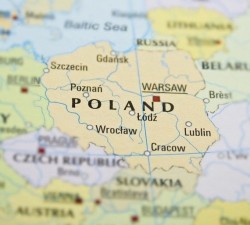100% of our projects made it to the Map
16-01-2020
On January 14th, Minister of Science and Higher Education published a list of strategic research infrastructures present on the Polish Map of Research Infrastructure. Among 70 approved projects, 7 proposals were prepared by scientists form National Centre for Nuclear Research. These include four projects for the new national research structures and three projects of participation of Polish scientists involved in NCBJ-managed consortia in international projects.
Among the new national infrastructures placed on the Map was the already started investment in the construction of the Polish free electron laser PolFEL and its development into a second stage, significantly expanding research capabilities. The second proposal of NCBJ is to build a new research laboratory at the Maria nuclear reactor, which will allow to effectively use the strong neutron flux generated in the reactor for material and biological research, among other fields. Next, NOMATEN CoRE project is to be used for research and synthesis of new materials intended for exploitation in extreme conditions, as well as in medicine. In the applicants’ intention, this will be a significant supplement to the recently created NOMATEN Center of Excellence with their own research laboratories located in Świerk. In the designed laboratories it should be possible to produce, modify and comprehensively test new materials with unique properties. The last, but perhaps the most important project of the new national research infrastructure planned at the NCBJ is the European experimental high-temperature nuclear reactor cooled with helium EUHTER, the construction of which would be the introduction to the introduction of high-temperature reactor technology into European industry.
Among the international projects included on the list of strategic research infrastructures emerging with the participation of Polish scientists, and coordinated by the NCBJ, were two advanced and continued projects and one project under preparation. The already advanced projects include research and development of the infrastructure of European free electron X-ray laser European XFEL in Hamburg and participation in observations of the Large Synoptic Survey Telescope, which is being built in Chile. This device, which is going to serve as a tool for research for dozens of Polish scientists, among others, will provide as much information in one night (about distant galaxies, variable objects, stars etc.) as the largest currently operating galaxy survey Sloan Digital Sky Survey (SDSS) during its entire operation. It is planned that some of this data will be collected and processed at the Świerk IT Center at NCBJ. LSST is expected to start work next year. The Hyper-Kamiokande experiment project is a completely new venture. This experiment located in Japan is to significantly broaden our knowledge of neutrinos – the least known particles of the Standard Model so far.
Naukowcy z NCBJ uczestniczą również w pracach konsorcjów koordynowanych przez inne jednostki, których projekty także znalazły się na Mapie. Jest to m.in. udział w eksperymentach CERN, czy w projektach budowy infrastruktur informatycznych zgłoszonych przez AGH i PCSS (ICB PAN).
Researchers from the NCBJ also participate in the work of consortia coordinated by other units, whose projects were also included on the Map. This is, among others participation in CERN experiments or IT infrastructure construction projects submitted by AGH and PSNC (ICB PAN).
Pełna lista wybranych projektów znajduje się na stronie MNiSW: http://www.bip.nauka.gov.pl/g2/oryginal/2020_01/3175b4b7b9daae8d0f255b3670d54361.pdf
A full list of selected projects can be found on the website of the Ministry of Science and Higher Education: http://www.bip.nauka.gov.pl/g2/oryginal/2020_01/3175b4b7b9daae8d0f255b3670d54361.pdf
Placing the project on the Polish Map of Research Infrastructure does not automatically guarantee its financing, but it significantly increases the chances when applying for the necessary funds.





